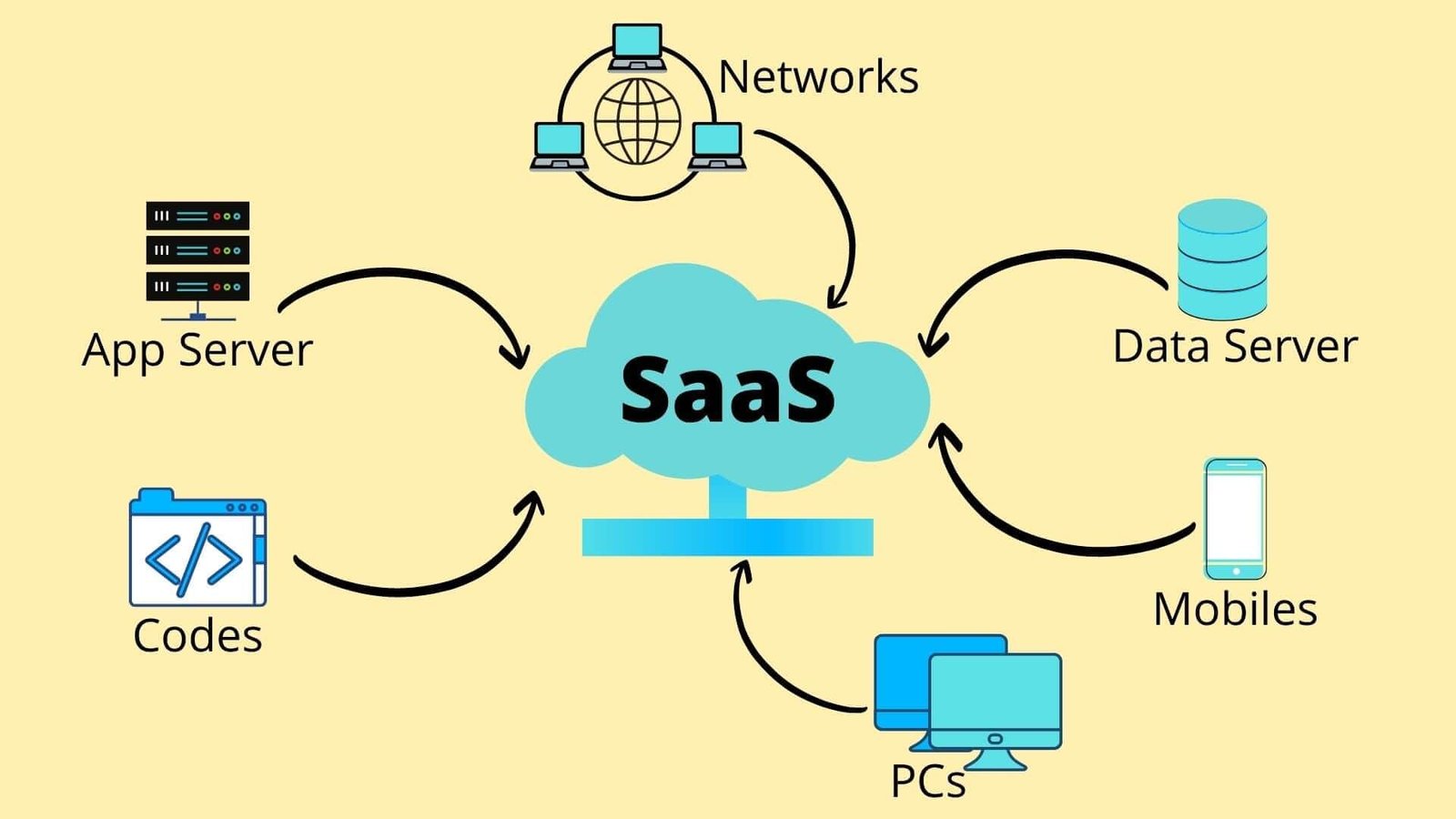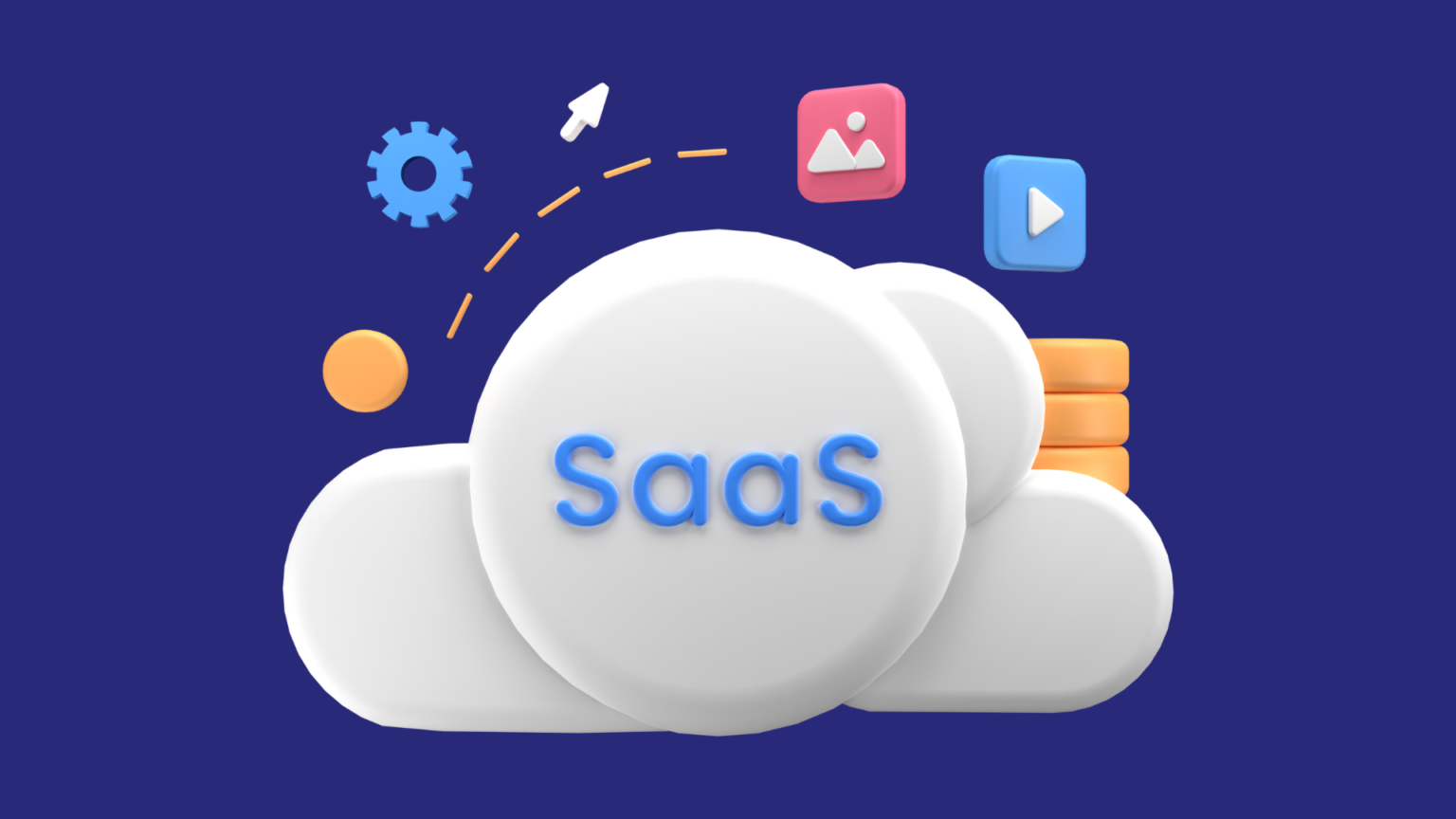You’ve likely heard the term “SaaS” thrown around in the business world, but what does it really mean? If you’re not sure, don’t worry—you’re not alone. SaaS, or Software as a Service, is an increasingly popular model that’s shaping how companies access and use software. It’s all about flexibility, scalability, and cost-efficiency. Let’s dive into the SaaS meaning and discover why it’s taking the tech world by storm, how it works, and whether it’s the right choice for your business.
What is SaaS (Software as a Service)?
The simplest way to explain SaaS is this: it’s software that you don’t have to download or install. Instead, you access it over the internet. Picture this—you used to buy a software CD, install it on your computer, and pray that it didn’t get outdated too quickly. With SaaS, that’s ancient history. SaaS is delivered through the cloud, meaning you can access it anytime and anywhere, from any device.
Some of the world’s most popular software platforms are SaaS-based. Think Google Workspace (formerly G Suite), Slack, and Zoom. These are all cloud-based, subscription services that you access through a web browser.
How Does SaaS Work?
So, how does SaaS actually work behind the scenes? It’s all about the cloud. Instead of owning the software, SaaS customers pay to use it on-demand. The provider hosts the software on remote servers, handles maintenance, and takes care of updates, so the user can focus on using the service rather than managing it.
For the end user, accessing SaaS software is simple—sign up, log in, and start working. The provider handles all the complicated stuff like data storage, server management, and upgrades. You get the benefits of the software without the headache of maintaining it.
The Architecture of SaaS
The technical magic that makes SaaS possible is its multi-tenant architecture. In a multi-tenant setup, multiple users (or tenants) share the same infrastructure, but their data is securely isolated. This allows companies to save money because they don’t need to build custom software for each client. Instead, they share resources, and the provider manages everything centrally.
Think of it like an apartment building. Everyone lives in their own unit (their data), but they share the same overall structure and resources like power, water, and security. SaaS providers use this model to deliver affordable, scalable software solutions to businesses of all sizes.
What Are the Benefits of SaaS?
Now that we’ve covered what SaaS means and how it works, let’s talk about why businesses are flocking to this model. SaaS offers several advantages that traditional software just can’t match.
- Cost-Effective: You no longer need to buy expensive software licenses or maintain hardware to support it. With SaaS, you pay a subscription fee, often based on usage or the number of users, which can be much cheaper in the long run.
- Instant Access: No downloads, no installations, no waiting. SaaS applications are ready to use from the moment you sign up, and they can be accessed from anywhere, as long as you have an internet connection.
- Scalability: If your business grows, your software needs to grow with you. SaaS makes that easy. Add more users or upgrade your plan instantly—no need to buy new hardware or install more software.
- Automatic Updates: Remember those days when your software would suddenly stop working because it needed an update? SaaS eliminates that pain. Updates are automatically rolled out by the provider, so you always have the latest version.
- No Maintenance Hassles: With traditional software, you often need an IT team to handle maintenance and troubleshooting. SaaS takes that off your plate—the provider handles everything.
Are There Any Disadvantages to SaaS?
Like any technology, SaaS has its challenges. Let’s explore some of the potential downsides.
- Reliance on Internet: Since SaaS is cloud-based, a stable internet connection is a must. If your internet goes down, so does your access to the software.
- Limited Customization: While SaaS tools are often highly flexible, they can’t always be customized as much as traditional, on-premise software. Some businesses may find that a one-size-fits-all solution doesn’t quite meet their needs.
- Data Privacy Concerns: With your data stored off-site, there’s a natural concern about privacy and security. While most reputable SaaS providers have strong security measures, some businesses still worry about their sensitive information being hosted on someone else’s servers.

Challenges and Risks of SaaS
Businesses looking to adopt SaaS need to be aware of some risks. One of the biggest is vendor lock-in. Once you choose a SaaS provider, switching to a different one can be difficult, especially if the software becomes deeply integrated into your daily operations.
Additionally, SaaS often operates on a subscription model, so if you stop paying, you lose access to the software and possibly even your data. It’s crucial to read the fine print and understand your provider’s policies on data retention and exportation.
How Does SaaS Handle Security and Privacy?
Security is often the number one concern when it comes to SaaS, and rightly so. After all, you’re trusting a third party with your company’s data. But rest assured, most reputable SaaS providers use top-tier security protocols. Data encryption, secure data centers, and stringent compliance measures like GDPR help protect your information.
Still, businesses need to take extra steps to ensure security on their end too. Multi-factor authentication, strong password policies, and regular security audits are a few ways to minimize the risks.
SaaS vs. Other Cloud Models: IaaS and PaaS
When it comes to cloud computing, SaaS isn’t the only game in town. Two other models—IaaS (Infrastructure as a Service) and PaaS (Platform as a Service)—are also popular options, especially for developers.
- IaaS provides the infrastructure—servers, networking, and storage—that businesses need to build and run their own applications. It’s like renting virtual hardware.
- PaaS provides a platform for developers to build, test, and deploy their applications without worrying about the underlying infrastructure. It’s like having a foundation ready for you to create whatever you want.
While SaaS focuses on delivering ready-made software solutions to users, IaaS and PaaS provide more technical flexibility for developers and businesses that want to build their own systems.
Examples of Popular SaaS Providers
SaaS is everywhere. Chances are, you’re already using it in your daily life, whether you realize it or not. Here are some of the most well-known SaaS providers:
- Google Workspace: Offers a suite of productivity tools like Gmail, Google Docs, and Google Drive, all accessible through the cloud.
- Slack: A team communication tool that allows businesses to collaborate in real time.
- Salesforce: One of the most popular CRM (customer relationship management) platforms, used by businesses to manage customer interactions.
- Microsoft 365: The cloud-based version of Microsoft Office, providing access to Word, Excel, PowerPoint, and more.
How is SaaS Priced?
One of the best things about SaaS is its flexible pricing models. There’s no need to spend thousands on a one-time software purchase. Instead, most SaaS providers use a subscription model, where you pay a monthly or annual fee for access.
- Subscription-based: The most common SaaS pricing model, where businesses pay a recurring fee based on the number of users or features they need.
- Pay-as-you-go: For businesses that might not use the software regularly, some providers offer a pay-per-use model.
- Freemium: Many SaaS companies offer free basic versions of their tools, with the option to pay for premium features later. This is a great way to test the waters before committing.
Read More: India Meteorological Department Issues Red Alert in Maharashtra, Goa, and Gujarat: Prepare for Heavy Rain- Click Here
Conclusion
The SaaS meaning goes far beyond just software hosted in the cloud. It represents a fundamental shift in how businesses operate. By providing affordable, scalable, and easily accessible software, SaaS has removed many of the barriers that once held companies back.
From startups to large enterprises, businesses of all sizes are turning to SaaS for its flexibility, cost-efficiency, and ease of use. While it’s not without challenges—like reliance on internet access and potential data privacy concerns—its benefits far outweigh its drawbacks.
If you’re thinking about moving to SaaS, now is a great time to explore how it can help your business grow, simplify processes, and give you a competitive edge in today’s fast-paced digital landscape.







